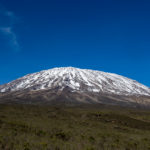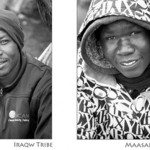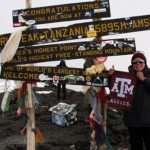
Mawenzi’s jagged peak
Photo: Thomson Safaris guest, Peter Gaylord
We often talk about Kilimanjaro as though it’s a single mountain, but in fact, it’s made up of three separate volcanic cones.
And when we say separate, we mean separate—the summits of Kibo (the tallest cone) and Mawenzi (the second-tallest) are around 7.5 miles apart!
As for so many of the mountain’s most recognizable features (like Mawenzi’s jagged top), the Chagga people have a folktale that explains why the two peaks are separated.
One upon a time a poor man was looking around the mountain for some cattle. He happened upon an old woman, and he asked her to help him. She was kind, and pointed him towards a large herd.
Eventually he found the cattle, but he couldn’t make the herd follow him. So he returned to the old woman to ask again for her help. She gave him a staff and said to him:
“Use this to drive the largest bull before you, and the herd will follow.”
He took the staff and followed her advice, and sure enough, the herd now followed him obediently. Soon, though, he came upon Kibo and Mawenzi standing close together, as they always did in that time. He asked Kibo to move aside, and let him drive his cattle through, but Kibo refused.
So for a third time the man went to ask for the kind old woman’s help.
“If you help me to plough my field,” she said, “I will give you what you need to drive Kibo and Mawenzi apart.”
So the man gladly ploughed her field for her, and when he was finished, the old woman came to him with a packet of magical powder.
“Take this and blow it upon the rocks of Kibo, and he and Mawenzi will let you through,” she told him.
So the man went back to Kibo and Mawenzi, and did as the old woman had told him, blowing the powder upon Kibo’s rocks.
As soon as he had done so, Kibo cracked and split apart from Mawenzi, and could not move back towards his friend.
Then the man drove his cattle across the space between Kibo and Mawenzi, until he eventually reached his home. And since then, Kibo and Mawenzi have never come together again.






